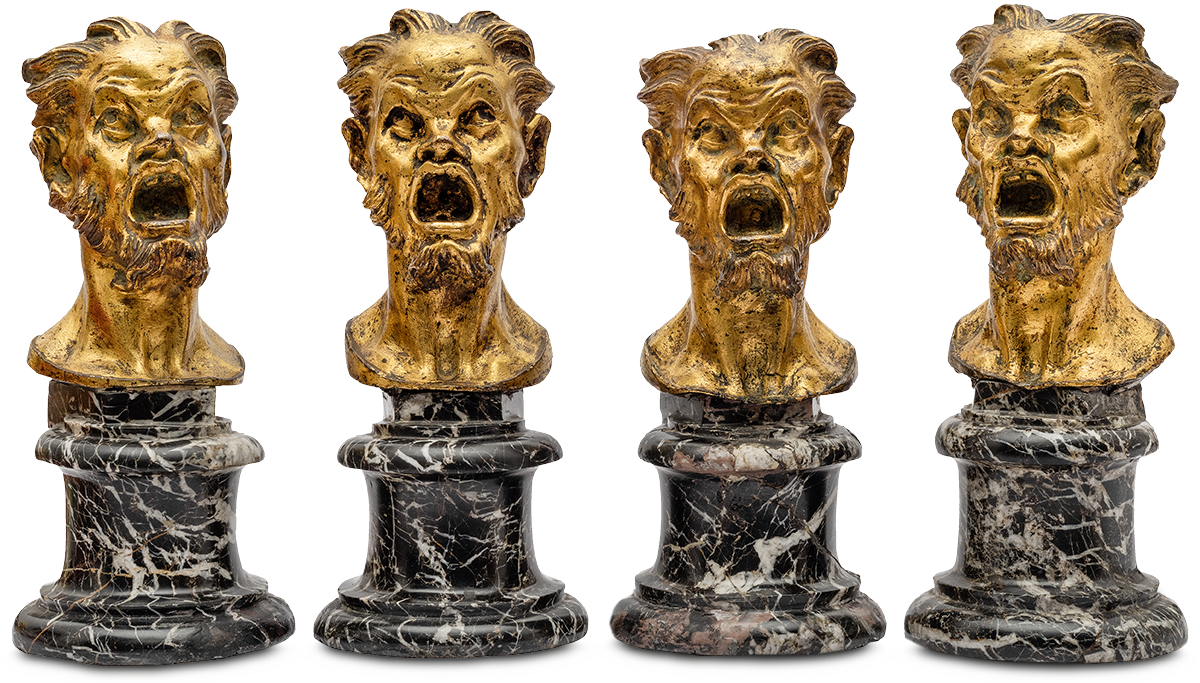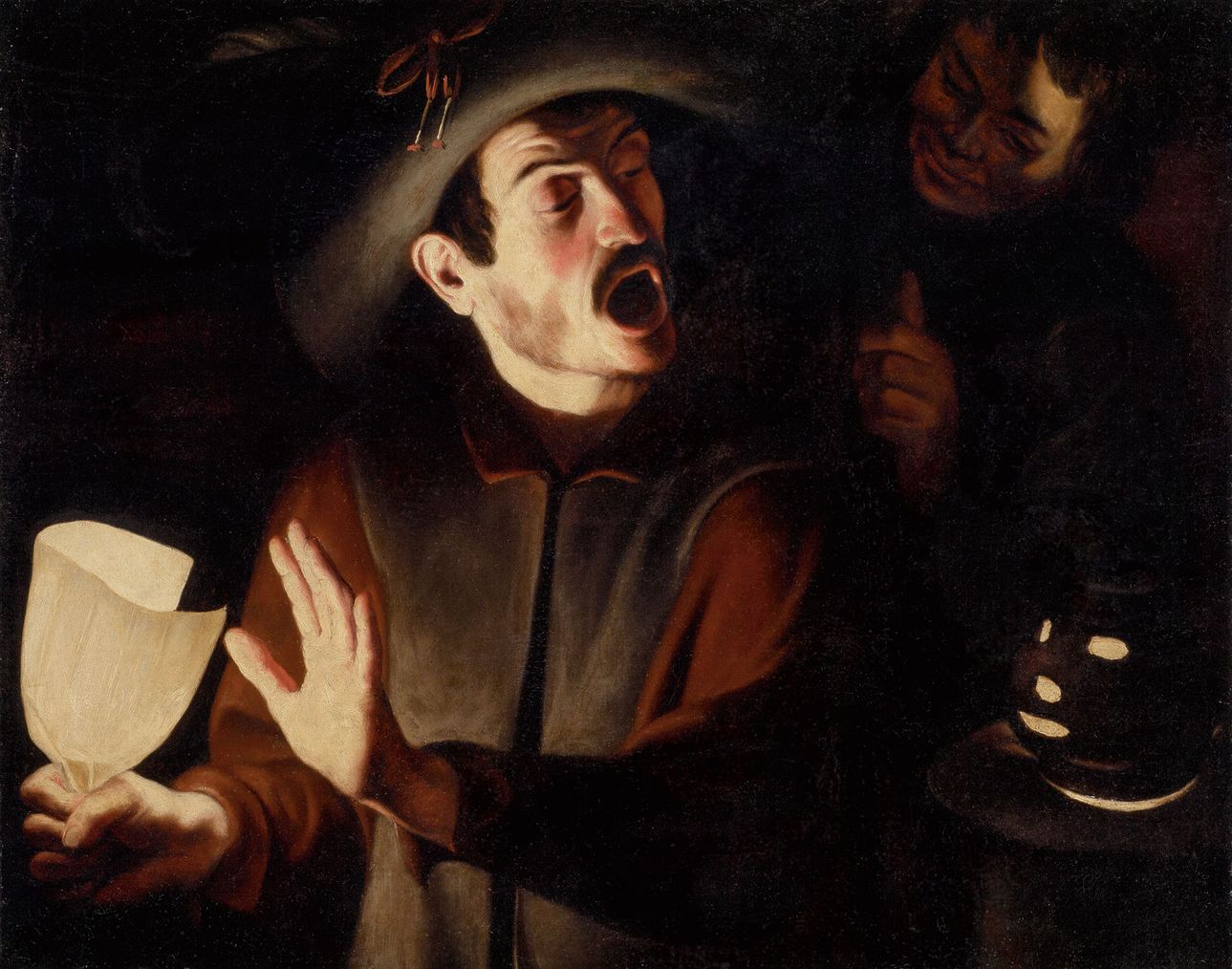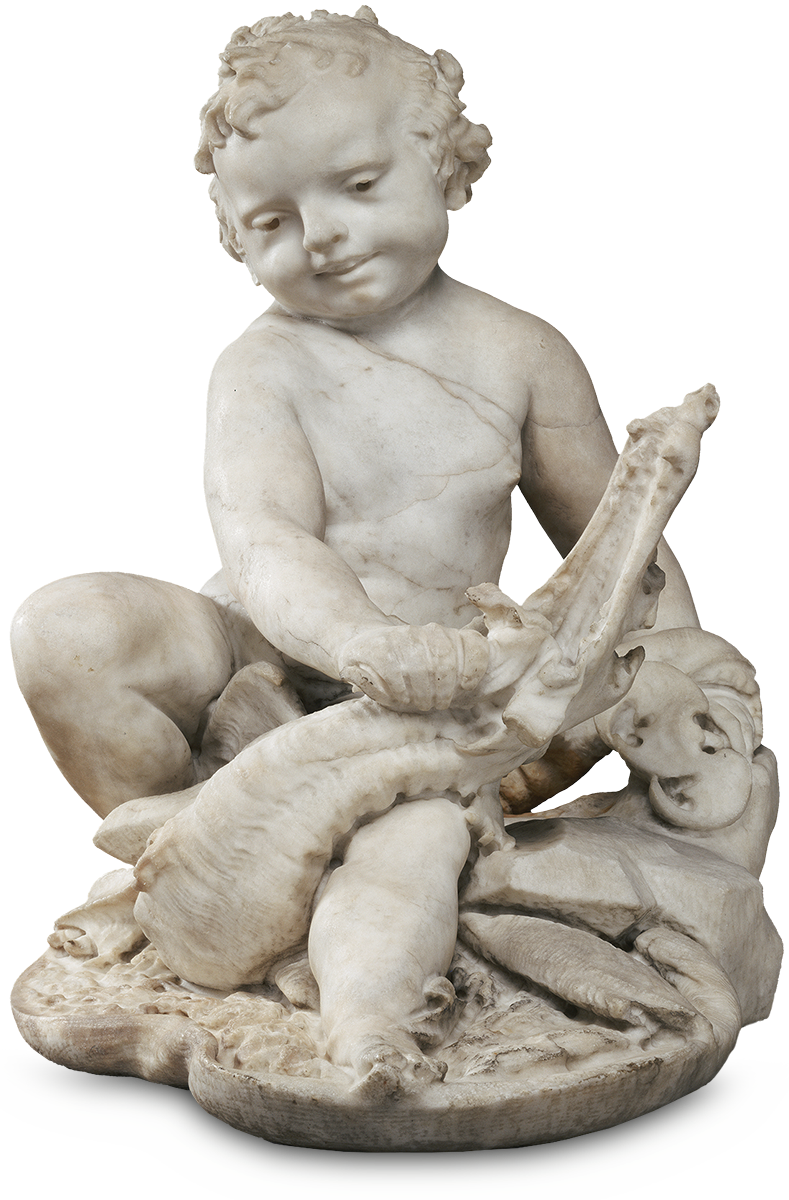One thing is clear: people liked a joke in the seventeenth century.
Literature was filled with clever thoughts and wordplay. The fine arts jested in the shape of amusing images and sculptures.
The scherzo emanates from serious topics, though. These jokes address the big questions of life. It was hard to endure life at the time without a little jesting and light-heartedness.

These grotesque heads had originally been attached to Bernini‘s private coach. Did the artist have something specific in mind to tell us? Surely he sat in his coach with a twinkle in his eyes, amused at the perturbed looks.
Gian Lorenzo Bernini
(Naples 1598–1680 Rome)
Four Grotesque Heads of Men
Rome, 1650–1655
Gilded bronze, H. 15 cm; base: bianco e nero antico
Rome, private collection
It was a joy to watch other people‘s fiercely emotional reactions and poke fun at them. The courts of the sixteenth century, however, chose to forego strong emotions, preferring beauty and social harmony. The motto was discipline, not emotion.
Is that one of the reasons why the boy in Bigot‘s painting is smiling at his victim‘s violent reaction, but does not laugh out loud?

Complicit, we are joining a silent chuckle at the victim.
We need to take a close look to recognize the boy in the top right corner. Bigot draws us into the scene with that detail. We are becoming complicit, and joining a silent chuckle at the victim.
A simple pumpkin surprised the man at the centre of the picture and has given him a fright.
We recognize that in his wide open mouth that is probably emitting a scream. The essence of the jest is surprise.
Bigot was known for his night scenes inspired by Caravaggio. He also had the byname ‚Trufemondi‘: one who deceits or dupes people.
Trophîme Bigot
(Arles 1597–1650 Avignon)
Screaming Man
c. 1615/20
Canvas, 79 × 100 cm
Vienna, Kunsthistorisches Museum,
Picture Gallery, inv. no. 6435
Many works of arts critically reflected society.
Some artists, like Annibale Carracci, considered jesting images a welcome relief from the otherwise serious themes in painting. The jokes were not superficial, however: they were clever and critical. They irritate in the contrasts they deliver. Immature children are playing at being adults. Small angels become an amusing variant of the many muscular men who have been fighting wild animals since antiquity.
Bernini‘s putto easily used his superhuman powers to slay the maritime monster and break its jaw. A playful smile is playing on his lips.
Pietro Bernini
(Sesto Fiorentino 1562–1629 Rome)
and Gian Lorenzo Bernini
(Naples 1598–1680 Rome)
Boy with a Dragon
Rome, c. 1616/17
Marble, H. 55,9 cm
Los Angeles, J. Paul Getty Museum,
Inv. no. 87.SA.42

Caravaggio, Bernini and their successors depicted not only great, dramatic emotions. Jokes also played an important role: the made it possible to gain a distance from oneself and the world, and to make a comment. Caricature also developed around this time. Caravaggio, Bernini and their successors used a sharp, inventive mind and a little trickery to challenge us into reflection. Many works of art were critical reflections of society.
